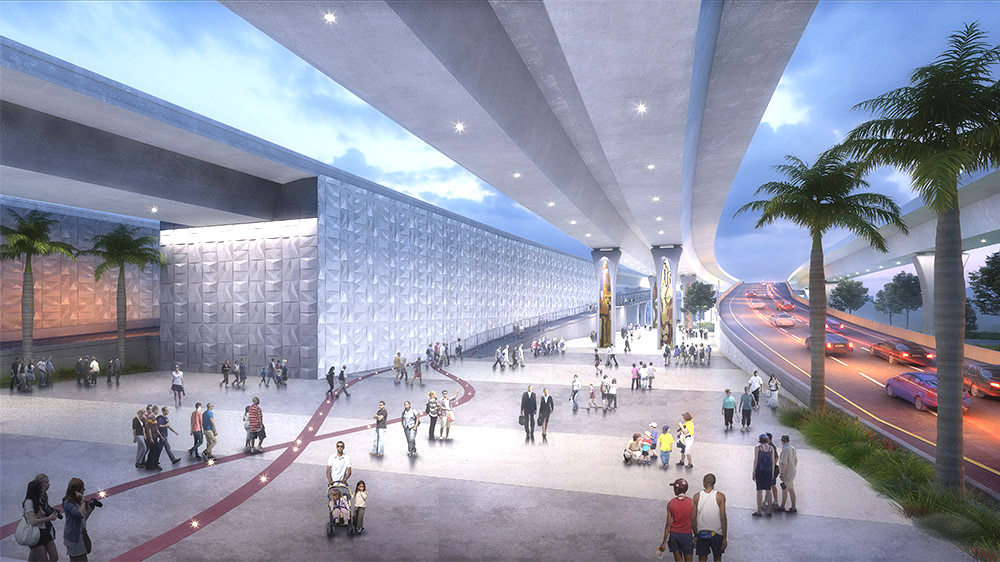In this year's installment of its annual “Highway Boondoggles” report, Gideon Weissman of Frontier Group and Matthew Casale of U.S. PIRG Education Fund deliver a stark warning about the billions of dollars states spend on unnecessary highways that fracture our cities, deprive transit of scarce funds, and pollute our environment. Below is the sixth of nine installments detailing case studies of these harmful roadways: Florida's widening ofI-395 and SR836 in Miami, highways that have long divided communities.
In Miami, highways slice through almost every section of the city, cutting neighborhoods off from one another and creating sprawl that threatens the surrounding environment. Those highways include I-395 and SR836, which were originally built through the segregated black community of Overtown, destroying much of the community and forcing thousands from their homes.
In 2012, Congress for a New Urbanism suggested a remedy that would help the community finally recover as a neighborhood: converting the highway to a street-level boulevard. That year, the group included I-395 on its list of “the top opportunities in North America to replace aging urban highways with boulevards.” Yet today, Miami is doubling down on highways by undertaking a five-year, nearly billion-dollar project to rebuild and add capacity to large sections of I-395 and SR-836.
The Florida Department of Transportation and the Miami-Dade Expressway Authority are marketing the “Connecting Miami” project as a community-enhancement project, pointing to the raised road height that “will allow for the connection of Overtown, Downtown Miami, Omni, and Edgewater to each other by a contiguous trail,” and the project’s signature skyline bridge (which the Miami Herald describes as resembling a “high-tech tarantula”).
But project images and details make it clear that truly significant community improvement from the project is likely a pipe dream. Project renderings of the I-395’s proposed underdeck park show the unlikely scenario of people happily strolling just feet from high-speed traffic under I-395. The usability of the park will also depend on the city being able to fund maintenance, including for the park’s extensive lighting and other ambitious design elements. On the other side of the interchange, SR 836 will be converted to a raised, double-decker highway, creating a giant concrete wall through the city.
In the I-395 environmental impact statement, the only note of any community benefit is the “savings in time and fuel provided by the increased capacity” – yet those benefits, if they materialize at all, would primarily go to those people driving over the neighborhood rather than to those living in it. A project analysis from 2007 estimated that 10 families or individuals, and five businesses, would have to relocate for the I-395 section of the project.
For the nearly billion-dollar project cost, Miami could undertake far better options to improve the district surrounding I-395. The city or state could invest in street safety, transit, parks and more, in line with the county’s long-range plan, which suggests an “emphasis on rapid transit, land use, densification, connectivity, [and] multimodal mobility.”
One project that could benefit the community by the Connecting Miami project would be the creation of a dedicated bus lane on the MacArthur Causeway, which connects the area with South Beach, and could save the corridor’s 15,000 daily bus riders 6 to 10 minutes each way during peak traffic conditions.
Miami also needs funding to accelerate progress on Miami’s SMART Plan for a “world?class transit system” of bus rapid transit and rail.
Today, decades after being cut in half by a highway, the Overtown neighborhood is showing signs of renewal. As one project document states, an infusion of Caribbean immigrants “along with recent efforts to direct Community Redevelopment Authority funding to this area, is beginning to create businesses that meet the ethnic needs, such as small groceries, restaurants and shops along NW 3rd Avenue.”
Miami has the chance to help the community finally recover some of what it lost decades ago — but only by focusing on real community needs, and by forgoing expensive and unnecessary highway projects.
Sponsored post: Spin and Better Block Foundation are calling on designers, urbanists and anyone who cares about safe and livable streets, to submit ideas for a new generation of multimodal parklets. Winning designs will get built and installed in Denver in September. Let’s take back our streets from cars, one space at a time. Apply now: https://www.spin.pm/streets





